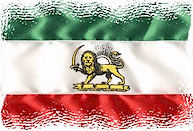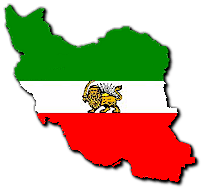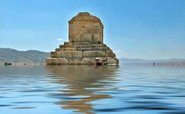This church is situated in the village of Qarah Kelisa, district of Siyah Cheshmeh, Maku. It is the tomb of the sacred Thaddeus. According to historical records of the Sassanian period, some of the Armenians were the followers of prophet Zoroaster, whereas some were sun worshipers. In the year 43 AD. two men by the name of Tatavoos and Batholemus preached on Christianity in the vicinity of Azarbayjan, thereby gaining number of followers (3500 people ) including the daughter of the monarch of the time.
Page Contents - Related Articles - Slidetray -
Apostles Thaddeus and Bartholomew
The Apostles Thaddeus and Bartholomew traveled through Armenia in AD 45 to preach the word of God. Many people were converted and numerous secret Christian communities were established there. Around that time, Abgar died after ruling for 38 years and the Armenian kingdom was split into two parts. His son Ananun crowned himself in Edessa, while his nephew Sanatruk ruled in Armenia. About AD 66, Ananun gave the order to kill St. Thaddeus in Edessa. The king's daughter Sandokht, who had converted to Christianity, was martyred with Thaddeus. Her tomb is located near the Ghara Kelisa.


Qarah Church
In order to stop the advancement of Christianity, the Armenian ruler ordered for their massacre in the year 66 AD. It is said that their bodies were buried in the vicinity of this church. In the year 1329 AD. , the church was renovated and in the year 1810 AD. was repaired. This church comprises of two sections, one is the 'Black Church' which is the older section, and the other being the 'White Church' is larger than the other and is the new segment. The black church has mythical artistic efforts on its structure whereas in the new church the engravings differs.
Armenian mythology
From Wikipedia, the free encyclopedia : navigation, search - "Armenian religion" redirects here. See also Religion in Armenia and Armenian Apostolic Church.
Very little is known about pre-Christian Armenian mythology, the oldest source being the legends of Xorenatsi's History. Armenian mythology was strongly influenced by Zoroastrianism, with deities such as Aramazd, Mihr or Anahit, as well as Assyrian traditions, such as Barsamin, but there are fragmentary traces of native traditions, such as Hayk or Vahagn and Astghik.
According to De Morgan there are signs which indicate that the Armenians were initially nature worshipers and that this faith in time was transformed to the worship of national gods, of which many were the equivalents of the gods in the Roman, Greek and Persian cultures. Georg Brandes described the Armenian gods in his book: “When Armenia accepted Christianity, it was not only the temples which were destroyed, but also the songs and poems about the old gods and heroes that the people sang. We have only rare segments of these songs and poems, segments which bear witness of a great spiritual wealth and the power of creation of this people and these alone are sufficient reason enough for recreating the temples of the old Armenian gods. These gods were neither the Asian heavenly demons nor the precious and the delicate Greek gods, but something that reflected the characteristics of the Armenian people which they have been polishing through the ages, namely ambitious, wise and good-hearted.”[1]
The dominant religion in Armenia is Christianity, with 94.7% of the population following the Armenian Apostolic Church[1]. Christianity was first introduced by the apostles Bartholomew and Thaddeus in the first century AD. In 301 AD Armenia became the first country to establish Christianity as its state religion when St. Gregory the Illuminator convinced Tiridates III, the king of Armenia, to convert to Christianity. Before this, the dominant religion was Zoroastrianism and to a smaller degree paganism. There are small communities of Catholic and Protestant Armenians, as missionaries converted a number of Armenians in the last few hundred years[2]. The Jehovah's Witnesses have a presence as well. The Church of Jesus Christ of Latter-Day Saints claims over 2,000 adherents in Armenia at the end of 2005 (lds.org website).
History & Architecture
One of the 12 apostles, St. Thaddeus, also known as Saint Jude, (not to be confused with Judas Iscariot), was martyred while spreading the Gospel. He is revered as an apostle of the Armenian Church. Legend has it that a church dedicated to him was first built on the present site in AD 68.Not much appears to remain of the original church, which was extensively rebuilt in 1329 after an earthquake destroyed the structure in 1319. Nevertheless, some of the parts surrounding the alter date from the 10th century. Most of the present structure dates from the early 19th century when Qajar prince Abbas Mirza also helped in renovations and repairs. The 19th century additions are from carved sandstone. The earliest parts are of black and white stone, hence its Turkish name Kara Kilise, the Black Church. A fortified wall surrounds the church and its now-abandoned monastery buildings. In July 2008, the St. Thaddeus monastery was added to UNESCO's World Heritage List, along with the St. Stepanos monastery and the chapel of Dzordzor (two other Armenian monuments located in the same province).






























 اخبار مربوط به زندانیان سیاسی و نقض حقوق بشر
اخبار مربوط به زندانیان سیاسی و نقض حقوق بشر

















 Tulips in Holland
Tulips in Holland












No comments:
Post a Comment